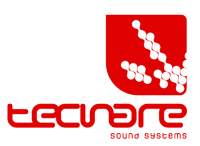Introduction
A well-maintained sound system is key to achieving consistent performance and avoiding unexpected disruptions during live events or fixed installations. Proper execution of preventive maintenance, along with quick diagnostic capabilities, ensures that the equipment continues to operate optimally throughout its lifespan.
This article provides a detailed guide on how to carry out preventive maintenance, diagnose common sound system problems, and implement best practices for equipment transportation, installation, and storage.
Performance Testing and Preventive Maintenance
Preventive maintenance involves actions designed to avoid failures and ensure continuous operation of sound systems. These practices help detect potential issues before they become severe. Below, we outline some essential performance tests:
Speaker Functionality Tests
One of the fundamental tests is to verify the performance of the speakers. It is important to check that all the components of the speakers, such as the high and low-frequency drivers, are working properly. This includes:
- Checking frequency response: Use a spectrum analyzer or measurement software to assess the frequency response and ensure that there are no unusual dips or peaks.
- Distortion test: Play test tones (sine waves) and listen for any unwanted distortion or strange noises, which could indicate an issue with the drivers.
Processor and Amplifier Review
The digital signal processor (DSP) and amplifiers are key components in ensuring quality sound. Make sure to:
- Check the DSP configuration.
- Review the gain levels and compression thresholds on the amplifiers.
- Perform load tests to ensure amplifiers are not overheating.
Cable and Connection Inspection
Faulty connections are a common cause of sound failures. During preventive maintenance, you should:
- Inspect cables for wear, cuts, or damage to the insulation.
- Ensure that NL4 SpeakON® or XLR connections are securely connected and free of corrosion.
Problem Detection and Troubleshooting
If a failure occurs, it is crucial to have an efficient strategy for diagnosing and solving the problem quickly. Below, we explore common failures in sound systems and how to address them.
Common Failures in Speakers and Components
-
Distorted Sound: If the speakers produce distorted sound, the cause may be a damaged driver or an issue with the amplification. Perform impedance tests and check the input signals to locate the source.
-
Speakers Not Producing Sound: If a speaker isn’t producing sound, first check the input signal. Then, verify whether the cables and connections are in good condition. In more severe cases, it may be necessary to inspect the amplifier or the internal components of the speaker.
-
Low or Inactive Sound on a Channel: This can be caused by a poor connection or an issue with the signal processor. Check the connections and perform a system reset to address any temporary issues.
Signal and Connectivity Problem Diagnosis
Signal issues can be caused by several factors such as interference or faulty connections. To diagnose them:
- Perform continuity tests on cables using a multimeter to ensure there are no short circuits or broken cables.
- Verify DSP settings to ensure there are no incorrect adjustments or incompatibilities in input and output signals.
Best Practices for Equipment Transportation, Installation, and Storage
Proper transportation, installation, and storage of equipment are essential to ensure its longevity and performance. Below, we outline the best practices for handling sound equipment.
Safe Transportation
Transportation of sound systems should be done with care to prevent damage to the equipment. Some best practices include:
- Use quality transport cases to protect speakers, amplifiers, and other sensitive components from shocks and vibrations.
- Disassemble components when possible to reduce the risk of damage. For example, remove speakers from mounting brackets and store them separately.
- Ensure proper loading and securing during transportation to prevent movement that could damage components.
Careful Installation
Proper installation is essential to ensure reliable system operation. Be sure to:
- Check electrical connections to ensure that the power supply is correctly stabilized and protected.
- Place speakers at the proper height and ensure there are no obstacles that could interfere with sound propagation.
- Avoid overloading channels or amplifiers by ensuring that each component receives the appropriate amount of power.
Proper Storage
When not in use, sound equipment should be stored properly to avoid deterioration or damage. Some recommendations include:
- Store speakers and amplifiers in a dry environment to prevent corrosion of electronic components.
- Store cables properly by winding them neatly and ensuring they do not become tangled or damaged during storage.
- Keep equipment away from extreme temperatures and protect it from direct exposure to moisture or sunlight.
Conclusion
Proper maintenance and diagnosis of sound systems are crucial to ensuring consistent and reliable performance. Implementing performance testing and preventive maintenance, along with a proactive approach to problem detection and fault resolution, ensures that sound systems remain in optimal condition.
In addition, best practices in equipment transportation, installation, and storage are essential to protecting the gear from damage and prolonging its lifespan. By adopting an integrated approach to equipment care, sound engineers and operators can ensure that their sound systems are always ready to deliver high-quality performance.
